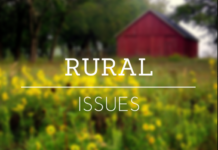The catastrophic flooding in Texas underlines the need for families to prepare for disaster, says a University of Missouri Extension human development specialist.
Hurricanes and tropical storms rarely threaten the Show-Me State, but Missouri does see its fair share of flooding and extreme weather, including drought, devastating straight-line winds and tornadoes, and severe winter storms, says Sherry Nelson.
Disaster can strike at any time and in any place, Nelson notes. Are you and your family prepared? Do you have emergency supplies on hand? What is your family’s disaster plan? Are important documents and information in a secure, accessible place?
“It’s a lot to think about, so it’s not surprising many people might throw up their hands and count on the odds of safety and survival being on their side,” she says. “A better way to look at preparedness is to see it as a process that we do over time. It is like any other goal we undertake. The main thing is to get started.”
For gathering emergency supplies, a divide-and-conquer approach can make preparing for emergencies a less intimidating prospect.
You might already have some of the basic items for an emergency supplies kit in your home. You can make a good start on disaster preparations by locating those items—such as flashlights and batteries, a first-aid kit, and rain gear—and gathering them in one convenient location. If you have nonperishable, easily prepared food on hand, you might move some of it from the pantry shelves to your disaster kit.
You can add to your emergency supplies a little at a time. “Break it down into manageable parts,” Nelson says. “This also can make it more affordable—perhaps $20 per month, more or less.”
A free, downloadable guide to putting together a disaster supplies kit is available from MU Extension at extension.missouri.edu/EMW1012.
Planning is also a crucial part of preparation. A disaster plan tells everyone in the family what they’re going to do when an emergency happens, Nelson says. A complete disaster plan will include information about each family member, household pets, insurance and finances, medications, vehicles, and the home and its contents.
You can download a disaster plan template at extension.missouri.edu/EMW1011. The PDF file can be filled out electronically, so you can update it frequently, print new copies and save backups on multiple devices and online in the cloud.
The emergency management office of Washington County, Ore., produced a 12-month preparedness calendar that provides a checklist of items to buy and things to do for each month. It can be downloaded at ocem.org/pdf_resources/Prep_Calendar.pdf.
The American Red Cross has a number of free preparedness apps at redcross.org/get-help/how-to-prepare-for-emergencies/mobile-apps.
In September, the Federal Emergency Management Agency and partners will observe National Preparedness Month. For more information, visit ready.gov, the official website of the U.S. Department of Homeland Security. Nelson says there are several other valuable links there as well.
“Remember, preparedness gives us more options to ensure our families’ safety,” Nelson says.




